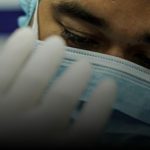Monkeypox: The Basics for Nurses
 In the past, cases of monkeypox only occasionally occurred outside of central and western Africa, where the disease is endemic, and it was virtually always related to travel or to the inappropriate relocation of wild animals. (In the US in 2003, 71 cases of monkeypox in six states were traced to pet prairie dogs that had been imported in the “exotic animals” trade.) What should we make of the outbreaks this year in 23 countries where the disease is rarely seen?
In the past, cases of monkeypox only occasionally occurred outside of central and western Africa, where the disease is endemic, and it was virtually always related to travel or to the inappropriate relocation of wild animals. (In the US in 2003, 71 cases of monkeypox in six states were traced to pet prairie dogs that had been imported in the “exotic animals” trade.) What should we make of the outbreaks this year in 23 countries where the disease is rarely seen?
Current cases of monkeypox are occurring in people without a history of travel to endemic areas, and in some cases without obvious contact to known cases. Most of these people have had mild disease, though monkeypox can cause severe disease in young children, pregnant women, and immunosuppressed individuals. While monkeypox usually is not highly transmissible nor deadly, it has never spread to so many countries seemingly simultaneously.
A close relative of smallpox.
Monkeypox is a close relative of smallpox, and the smallpox vaccine also prevents monkeypox infection. Many experts point to the end of mass smallpox vaccination campaigns as a factor in the emergence of cases at this time. Forty years ago, about 80% of the population was vaccinated against smallpox; today that figure is only about 30%. Monkeypox cases have been on the rise since smallpox was declared to be eradicated in 1980. In one monkeypox-endemic region, cases had increased twentyfold in recent decades. At the same time, international trade and travel have increased, and human encroachment on wildlife habitats has intensified, bringing animals and people into closer contact with each other.
Monkeypox is not as deadly as smallpox. The “clade” or genetic group of the current cases has a mortality rate of less than one percent in the underresourced areas where monkeypox is usually found. There have been no deaths in the current multi-country outbreaks.
Although there are critical questions to be answered about how the current crisis will continue to unfold, we can act on what is known about monkeypox: the course of the disease, its modes of transmission, and infection control measures.
Incubation and prodromal period.
The incubation period for monkeypox is asymptomatic, and can range from 5 to 21 days; it averages 7 to 14 days. Early symptoms include fever, headache, possibly sore throat and a cough, malaise, and lymphadenopathy. The swollen lymph nodes of monkeypox distinguish it from smallpox.
Symptoms.
After the onset of fever, a rash appears. Typically, the first lesions appear all at once on one part of the body, after which new “crops” of lesions appear in different locations. The lesions resemble a varicella rash, and there often are more lesions on the extremities and face than in other areas. As described by the CDC, lesions progress over two or three weeks through four stages before crusting over:
- macular
- popular
- vesicular
- pustular
The lesions are usually painful until crusting, when they may start to itch.
Transmission.
The person with monkeypox is considered infectious from rash onset through the scabbing over of all lesions. Transmission occurs by means of close contact with the lesions or with anything that has touched them (sheets, towels, clothing), or through prolonged face-to-face contact with respiratory secretions. Past outbreaks in Africa provide no evidence that the virus travels easily through the air. In addition, reports of “sexual transmission” may be inaccurate. The virus has not been found in semen. However, close skin-to-skin contact in sexual encounters when lesions are present will transmit the virus.
Treatment.
Smallpox vaccine may prevent monkeypox, or may shorten the course of the disease. At this time it is not available to the general public but in some cases is being used under investigational drug guidelines. Antivirals and vaccinia immune globulin have not yet been shown to be effective against monkeypox.
Infection control.
The CDC recommends standard, contact, and droplet precautions. The patient should be placed in a private room with the door closed (if possible). If transport outside of the room is necessary, provide the patient with a surgical mask and ensure that all lesions are covered. An airborne infection isolation room should be used for procedures that may aerosolize secretions, such an intubation. Staff should wear an N95 respirator, gown, gloves, and eye protection. At this time, isolation precautions should be discontinued only in consultation with the CDC or your local health department.
(This story originally appeared in AJN.)




